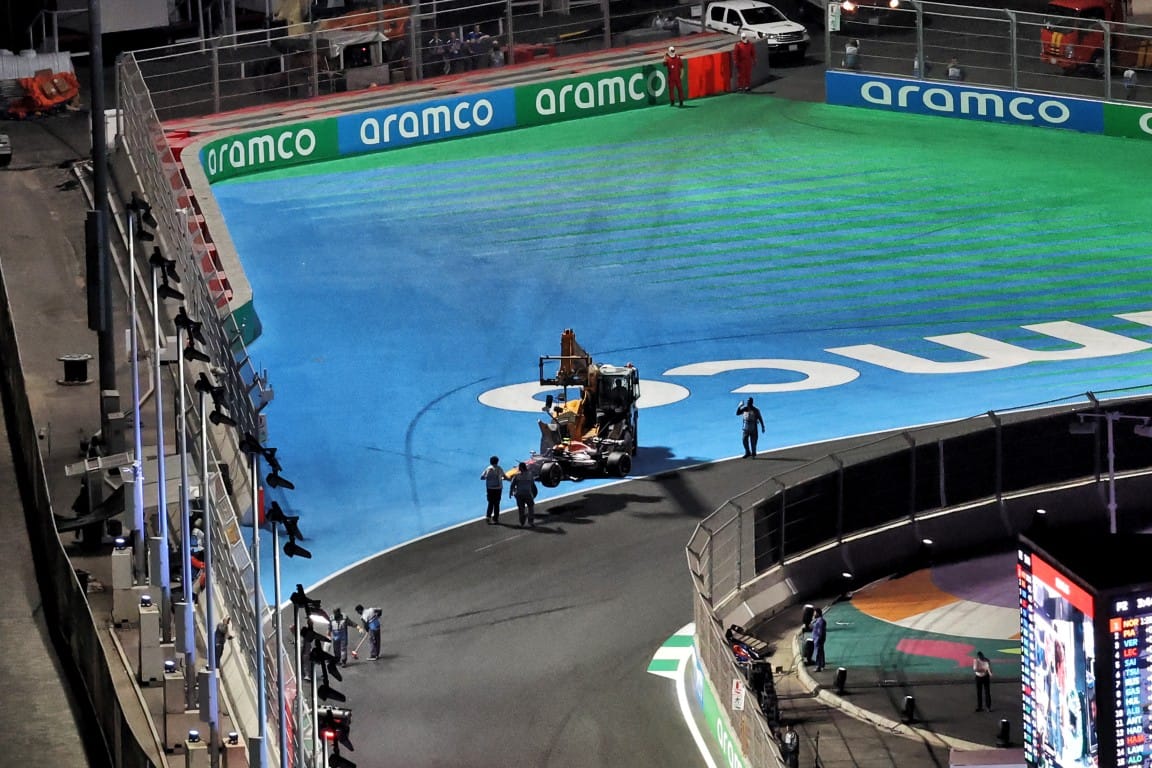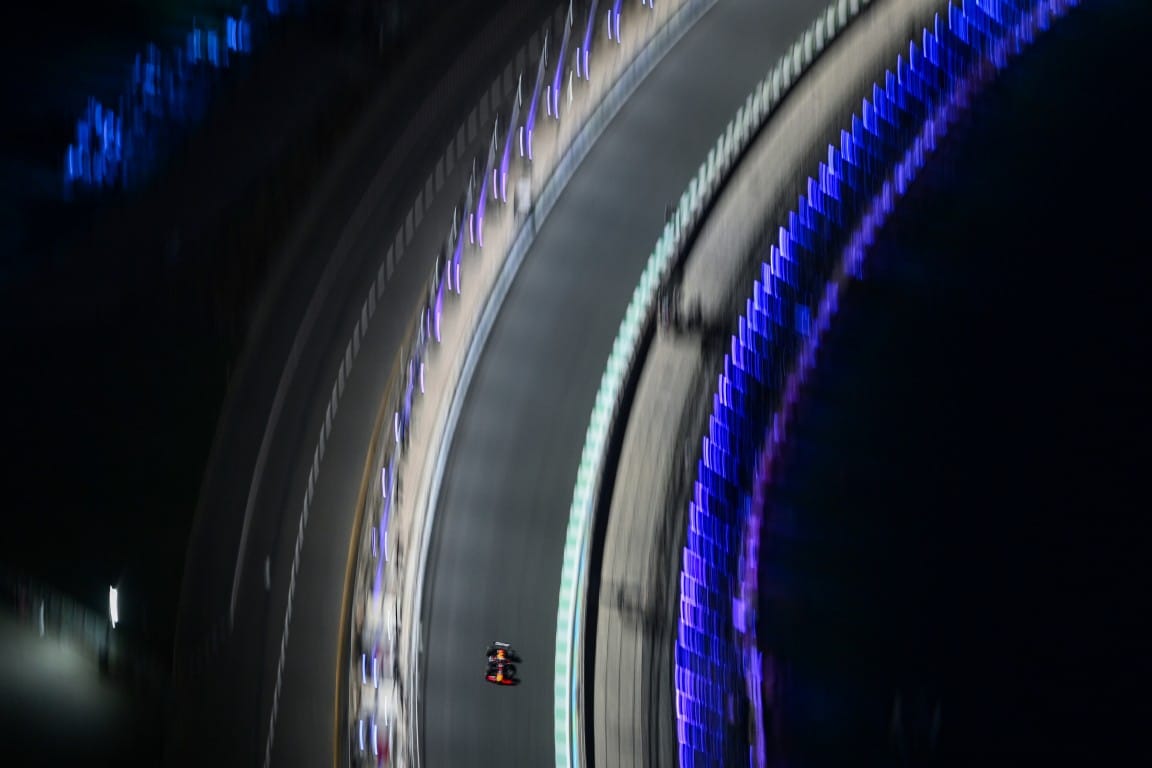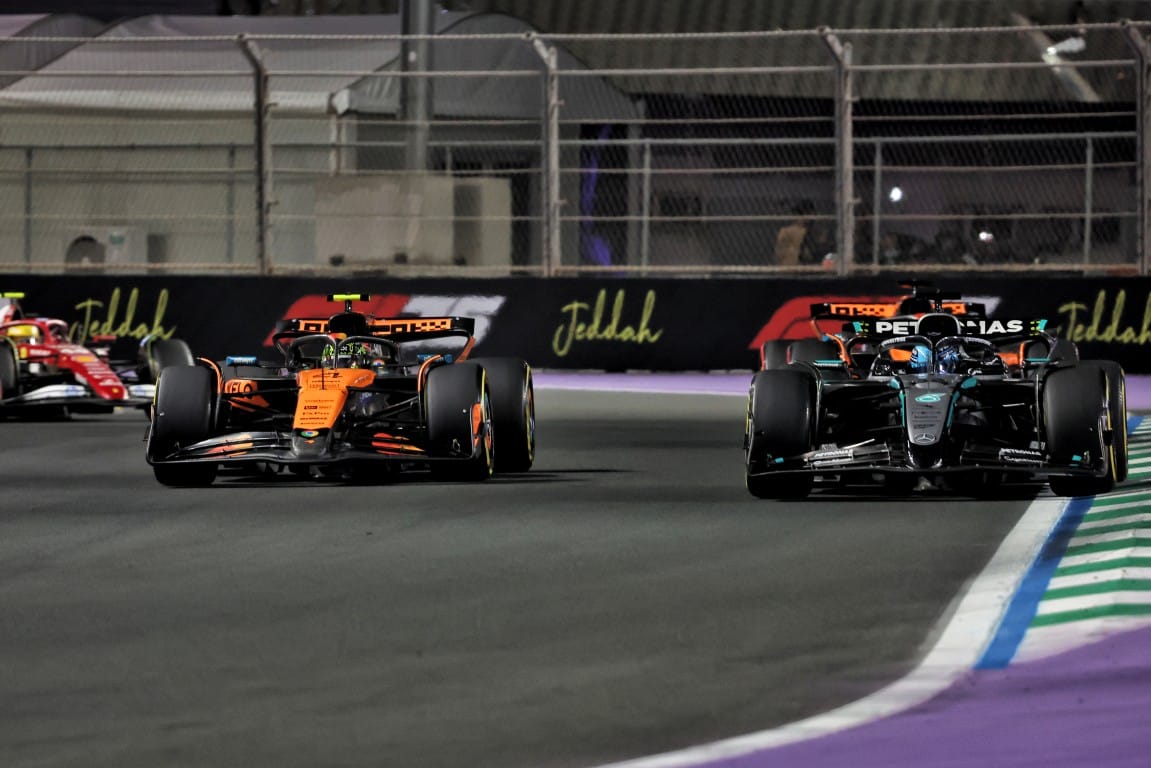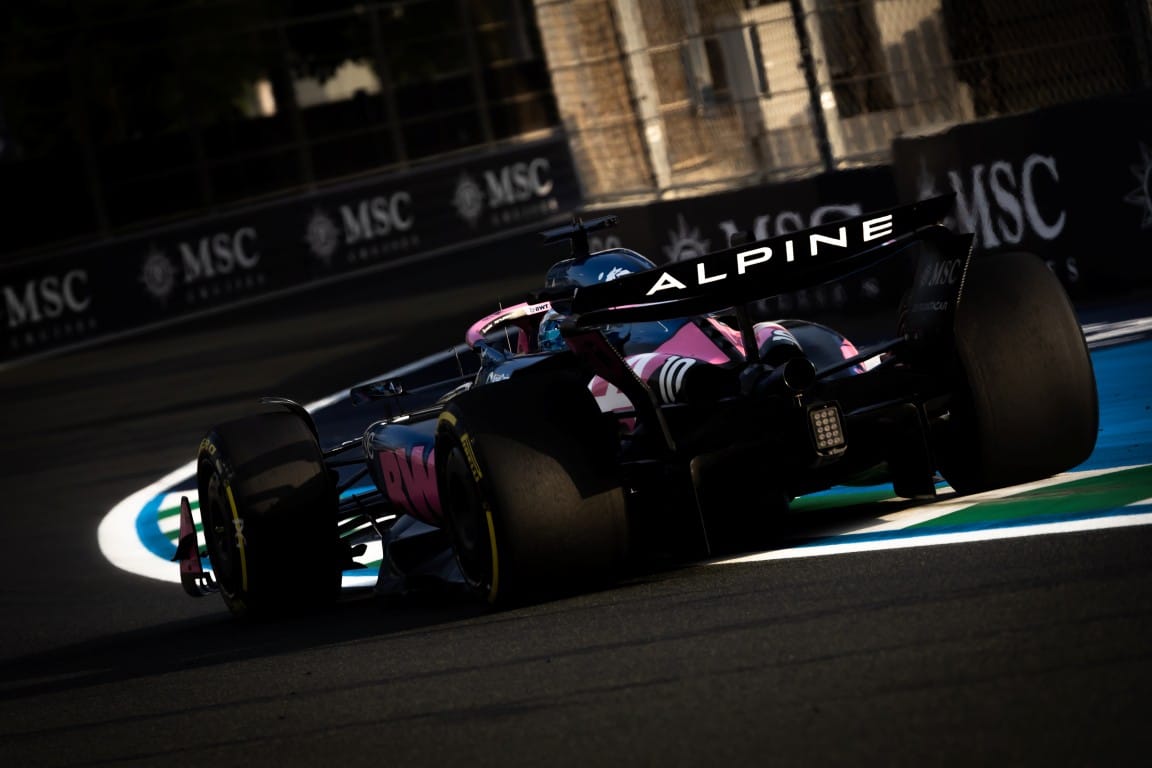The formidable statement with full handle, high speed and high Jeopard, was very obvious on the first day of the weekend of the Saudi Grand Prix.
What was also very obvious was McLaren’s continuous advantage in 2025, seen here to an even larger degree than Friday in Bahrain before the reduction of Pirelli minimum pressures of the rear tires there, the others get closer a bit on Saturday.
Assuming that Pirelli is no longer doing something similar here, McLaren’s advantage seems to be in the order of approximately 0.3 s on a qualification lap, but extending to an average of approximately 0.7 s to the best in a simulation of racing.
It was a complicated comparison, but the image of McLaren’s advantage emerges despite everything.

The complication came from the red flag induced by Yuki Tsunoda in FP2, just as everyone was early in his long races. Thus, the only possible direct comparison in this session was between the first runners, Oscar Piastri on 1m33.9s and Max Verstappen on 1m35.0s. It was, of course, the Twilight session with the cooler and faster track which best represents the qualifications and the race. However, in FP1, with the track around 20 ° C hot, long races were also carried out.
The combined sessions showed the following averages, all on the average C4 tire:
FP1
Norris 1m33.6s (7 laps)
Russell 1m34.4s (3 laps)
Piatri 1m34.3s (4 laps)
Leclerc 1m34.6s (8 laps)
Antonelli 1m34.6s (7 laps)
Gazly 1m35.0s (6 laps)
Hamilton 1m35.3s (4 laps)
Fp2
Piatri 1m33.9s (4 laps)
Verstappen 1m35.0s (7 laps)
Even more impressive than McLaren’s averages were the way they were made, with so little degradation on a track that requires strong requirements on rear temperatures. The extreme opposite was the Red Bull, in which Max Verstappen complained that his rear rights had “left” after eight laps.
In fact, the degradation rates between the best four teams were aligned very closely with the amount of rear wing that they each operated on this low -cost track, McLaren carrying the largest in the region, the least Red Bull and Mercedes and Ferrari between the two.

By looking at the long term FP1 of Lando Norris on a track where should be greater than that of FP2, its total apparent degree on seven rounds was only 0.076 s. Compare this to the seven -lap Race of Verstappen in FP2 – where its total apparent DEG was 1.25 s.
Thus, not only was the McLaren considerably faster, but it took less from its tires by doing so. The apparent degradation of the tires in this case is calculated by subtracting the effect of a reduction of 2 kg of the weight of the fuel per turn and by comparing real time for each round. The difference should be the tire deg, although this is not an exact science because the drivers start the passage estimating the pace to which their tires can live.
Although the Red Bull looks the lowest of the first four cars during a passage, Verstappen managed to go third further behind the two McLarens in FP2, about 0.3 s at Norris.
Looking at the respective towers of Norris and Verstappen, they are practically elbow at the moment when they arrive at the turn 13 Hairpin, which returns them and puts them towards sectors two and three.

This is where the Red Bull tires are starting to abandon because the McLaren are always good. This tends to be the case even when they perform similar wing levels, but it is even more distinctive with the respective wings here.
At the exit of turn 13, Verstappen lost 0.1 just in this corner alone. He recovers a little before having to brake for the fifth round 15 – and here he loses a big piece, the gap at 0.27 s at the exit.
He maintains this gap for the rest of the knees, winning on straight lines, losing everything again on turns. For the fifth generation 22 turn, Norris brakes 10 meters later and its minimum speed in the middle of the corner is 207 km / h compared to 189 in Verstappen.
“Today, we tried different things with the car,” said Verstappen, “and worked to find a different direction. I think we learned a lot, but that’s still not where we want the car to be.”
Charles Leclerc did his best tour of a set of used tires after opposing his first attempt for four whole clicks less in the front wing, giving an idea of the way he found it. The margin by which he drags Verstappen is almost the same as what you expect from the difference in life of the tires.

The Ferrari relies earlier on the right pit than the Red Bull, but its speed through the straight lines and the flat folds of sector one is almost the same. We compare a used tire turn to a new one, so it is not a just comparison of the angle speed, which really shows in the corners at low speed where the Ferrari is generally the best. But in the quick turn 22, it is faster than the Red Bull, Leclerc four meters later on the brakes and with a minimum in the middle of the corner of 197 km / h.
Mercedes is not the fastest on the straight lines here, unlike Bahrain. But it is closest to Red Bull.
Russell looked at the closest threat to McLaren on long FP1 races, but his C5 race in FP2 was made earlier than that of others, partly explaining his relatively modest place in the titles.

“We have not managed to get too many clean laps,” said Russell, “due to traffic and some efforts where we have not completely made the tires in the right window. We tried different things on the two cars, which was definitely a precious learning for Kimi (Antonelli) and myself. I think we found the direction in which we are going to go now.
“We were probably stronger in FP1 than FP2 in the end. We did not quite take precedence with the car we hoped, but I don’t think there is something that we cannot improve overnight.”
Before his crash, Tsunoda compared well to Verstappen, his new type of type being compromised by the preparation outside LAP. Lewis Hamilton had trouble with the demanding ferrari once again, about 0.5 s adrift from Leclerc. “It was a difficult day,” he said. “We always continue the right balance between the front and rear axles, and I am a little struggling with consistency on my knees at this stage.” Antonelli had some adventures with which he fled – and needs to find about a quarter of a second in Russell.

Pierre Gasly demonstrated that Bahrain was not a stroke of luck, the Alpine looking again the best of the rest of Williams.
The greatest difficulty confronted with McLaren will be to ensure equality between its drivers. A updated diffuser has been brought here, but only one of them. Piastri tried it in FP1, Norris in FP2.
Norris looked faster, whatever the specification he was running and Piastri admitted that there were some corners in which “I need to do a better job”. Most of the advantage of Norris arrived in the first two laps, where his aggressive approach was impressive.


